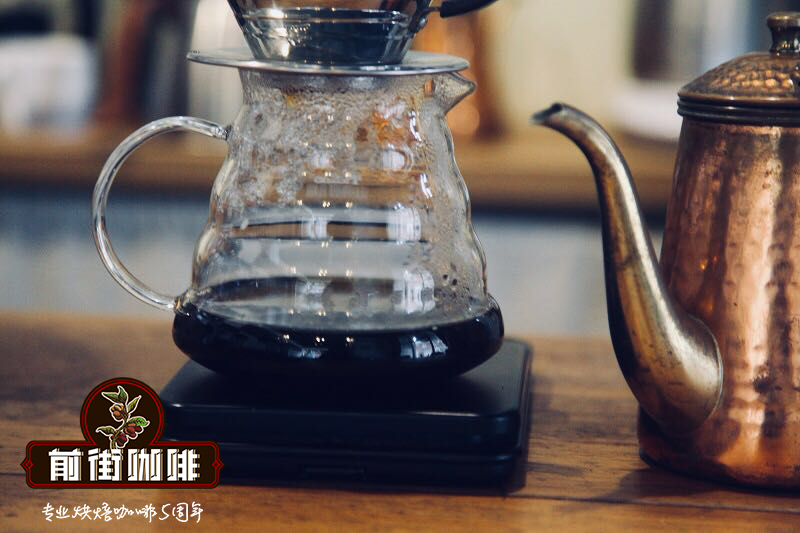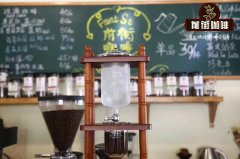How to make espresso the water temperature of the coffee machine should be set at what degree?

Professional coffee knowledge exchange More coffee bean information Please pay attention to coffee workshop (Weixin Official Accounts cafe_style)
The PID control inside the espresso machine is often unsatisfactory and cannot bring more accurate temperature. Barista appeal: make coffee machine temperature more accurate. But most coffee makers are indifferent. Given this, a question arises: how important is accurate water temperature to a busy coffee shop?
Backed by basic science
Everyone with a little knowledge of chemistry knows about "thermal equilibrium," where two things at different temperatures are mixed together and they end up somewhere in between. Espresso is no exception. It is a mixture of hot water and room temperature coffee powder.
In order to calculate heat equilibrium, we need these known conditions: weight (of each substance), initial temperature, specific heat capacity (i.e., the amount of heat required for each 1 ° C rise in 1 g of substance).
In order to perform this idealized experiment, we assume that there is no heat loss in the powder bowl, brewing head, water outlet, etc.
If we extract 40g of Espresso from 20g of coffee powder, we need to mix 65g of water with 20g of coffee powder (assuming that the water absorption of coffee powder is 1.2);
The temperature of the coffee machine is set at 93 ℃, and the coffee powder is at room temperature (20 ℃);
The specific heat capacity of water is 4. 18kJ/(kg·℃); coffee has a texture similar to wood and is not absolutely dry, assuming a specific heat capacity of 1.4 kJ/(kg·℃);
In the extraction process of Espresso, the temperature of the first extracted Espresso is much lower than that of the last extracted Espresso. Here, we need to take the average temperature of Espresso, not the absolute temperature.
Finally, the temperature of Espresso is 86.2 ℃.
Is it much lower than we thought? What does this temperature mean? What does it mean for a coffee machine that never stops?
Coffee machines are not very different, but when it comes to bean grinders, they are very different. Friction generates heat during grinding, and this heat is absorbed by the coffee powder, changing the equation above.
Coffee powder will absorb a lot more calories than we can imagine. The continuous operation of the grinder can raise the coffee powder from 20 ℃ to 50 ℃, and then convert it to the previous equation, and the temperature of the Espresso we get will become 89 ℃, which is 3.8 ℃ higher than before.
When faced with a temperature fluctuation of nearly 4 ° C, the good news is that the temperature of the coffee machine can be accurate to 0.1 ° C (because the specific heat capacity of water is much larger than that of coffee powder, the water temperature has a greater impact on the final Espresso). Temperature-accurate coffee machines can reduce this temperature fluctuation, but we have to think more about the temperature of the coffee powder from a global perspective. If possible, it is recommended to use an infrared thermometer to measure the temperature of the coffee powder to be extracted. The difference can be amazing.
But the most important thing is always consistency of quality. If the load of your grinder is relatively stable, it is not difficult to obtain high temperature consistency, and then extract consistent quality Espresso.
Important Notice :
前街咖啡 FrontStreet Coffee has moved to new addredd:
FrontStreet Coffee Address: 315,Donghua East Road,GuangZhou
Tel:020 38364473
- Prev

Coffee and Fruit Acid-Why is coffee sour? Is the coffee a little sour?
Professional coffee knowledge exchange more coffee bean information Please follow the coffee workshop (Wechat official account cafe_style) for many beginners, the sour coffee always feels a bit unacceptable to mix the taste of coffee with the sour taste, isn't it strange? As an upperclassman who doesn't pay for his life, the upperclassman always thinks that it is sour and sour, so he ignores the general beginning.
- Next

What's the difference between iced coffee and cold coffee? how do you make cold coffee? Preparation method of cold brewed coffee
Professional coffee knowledge exchange more information about coffee beans Please pay attention to the coffee workshop (Wechat official account cafe_style) cold brewed coffee is popular all over the world. But in many coffee shops, cold brewing coffee is more expensive. Do you want to know why? In fact, what makes cold-brewed coffee more expensive is the time it takes to make coffee. Usually, it takes less than 10 minutes to make some hot coffee
Related
- Beginners will see the "Coffee pull flower" guide!
- What is the difference between ice blog purified milk and ordinary milk coffee?
- Why is the Philippines the largest producer of crops in Liberia?
- For coffee extraction, should the fine powder be retained?
- How does extracted espresso fill pressed powder? How much strength does it take to press the powder?
- How to make jasmine cold extract coffee? Is the jasmine + latte good?
- Will this little toy really make the coffee taste better? How does Lily Drip affect coffee extraction?
- Will the action of slapping the filter cup also affect coffee extraction?
- What's the difference between powder-to-water ratio and powder-to-liquid ratio?
- What is the Ethiopian local species? What does it have to do with Heirloom native species?

